After staying at home for more than a month, the challenges of WFH are starting to reveal themselves. One significant challenge many people are finding is how to separate work and personal life, as this was previously separated by their commute, or physical distance. Yes, you can sit at your kitchen island, or use your laptop on a sofa, but this is a temporary fix. In the long term, a dedicated work space is important. It helps you to mentally switch to work mode. Even after this pandemic, fully or partially working from home may become a new normal for many people, and this is an issue that should be addressed swiftly for optimal productivity.
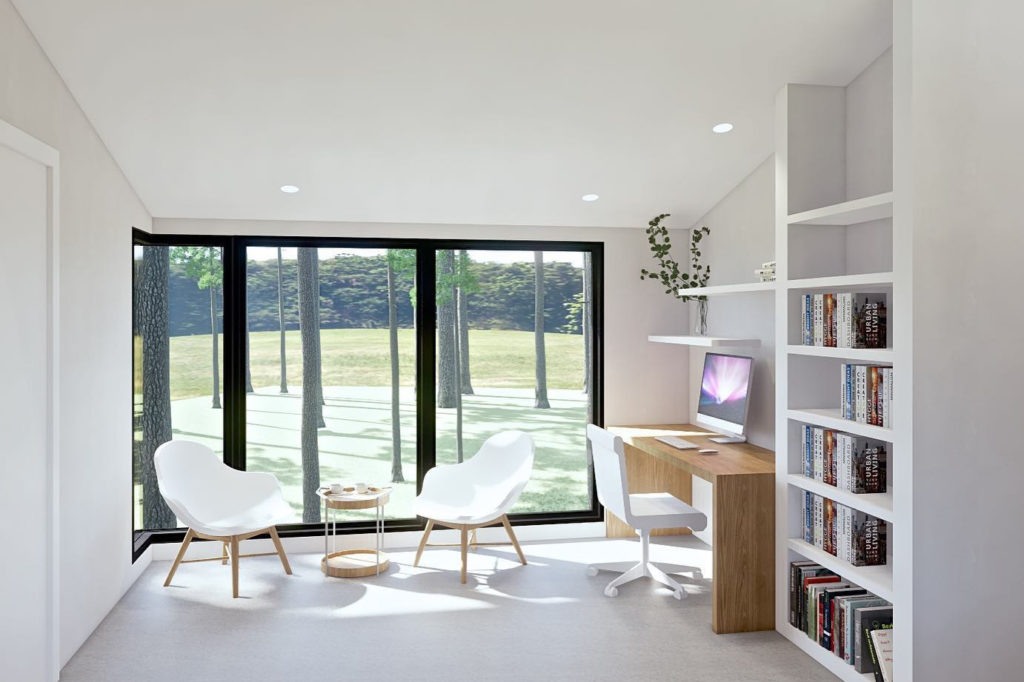
When working from home, the living/ working relationship exists in a middle state, which can neither be completely separated (physical limitation) nor blurred (psychological demand). Creating a smart interface in order to define such a relationship is the key.
To begin producing this interface, you must first consider the requirements of your job, such as what sort of tasks you complete and what they need. Does your job allow for high levels of flexibility in movement and travel? Do you normally interact with others continuously throughout the day? Do you have a lot of equipment, or take a lot of private phone calls?
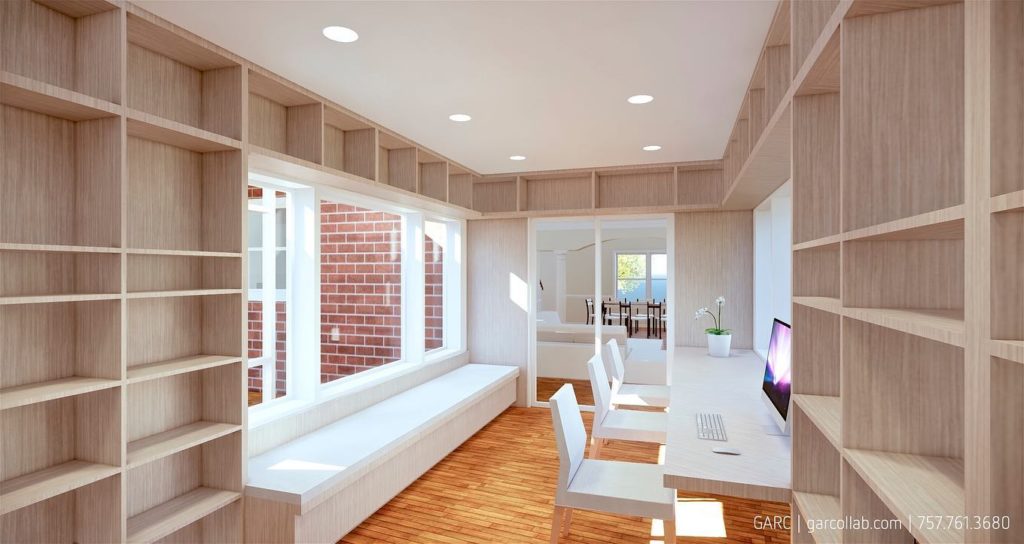
After examining the needs of your job, cross reference this with spaces within your house. If you rely on interaction, a multifunctional space may work best for you. If you have flexibility, left-over spaces may be a good fit. Or maybe you need a retreat space for your conference call with some privacy. You may also need multiple office areas to ensure everybody in the family can have their own territory. We would like to share with you some ideas for home offices, from temporary pop-ups by using some left over spaces in your home, to converting some underutilized spaces to create a dedicated private office.
Pop-up Office in Leftover Space
If you just need a computer and do not need a lot of privacy for acoustics, you can pop a desk wherever there is a left-over space. The minimum space needed to use a freestanding desk is about 48” wide and 54” deep (a 48”X24” desk plus 30” between your desk and wall or furniture behind for chair space).

This could be at the end of a hallway, or at any small niche space. Think of that dead space in the corner of your master bedroom that you can never bring yourself to buy furniture for, could this be a good place?
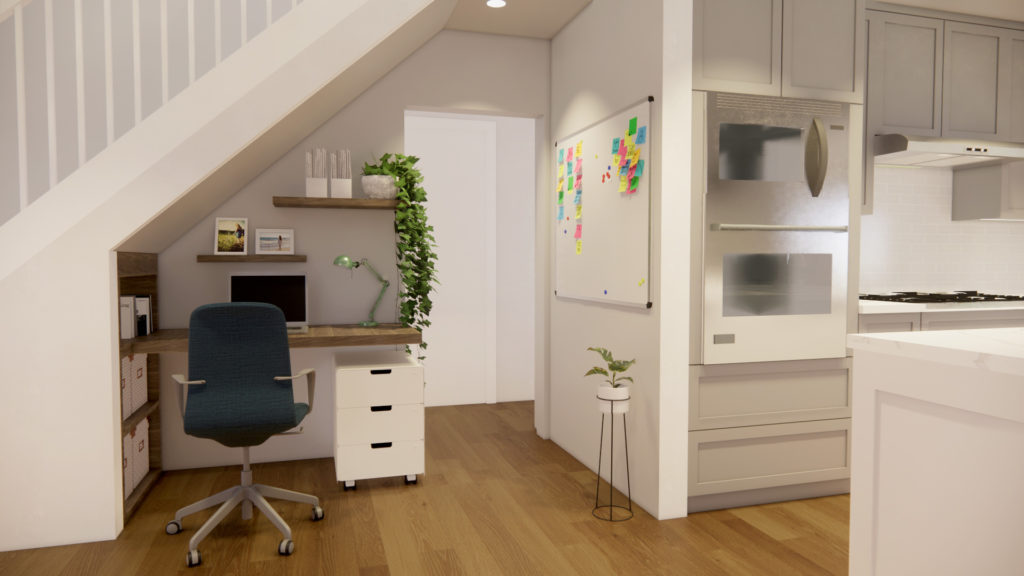
The stair is an area that has a lot of creative potential. Unused space underneath a stair could be converted into a niche office. The top of the stair landing usually has a larger area for circulation, which could also be used for a pop up desk.
Cloffice
If you need a dedicated area but don’t require much space, a Cloffice might be a good choice. Cloffice is a new term for closet converted into office space. A benefit of the Cloffice is that you have the ability to close the closet doors when you are done to hide all the clutter. Or you can also take out the closet doors for more space.
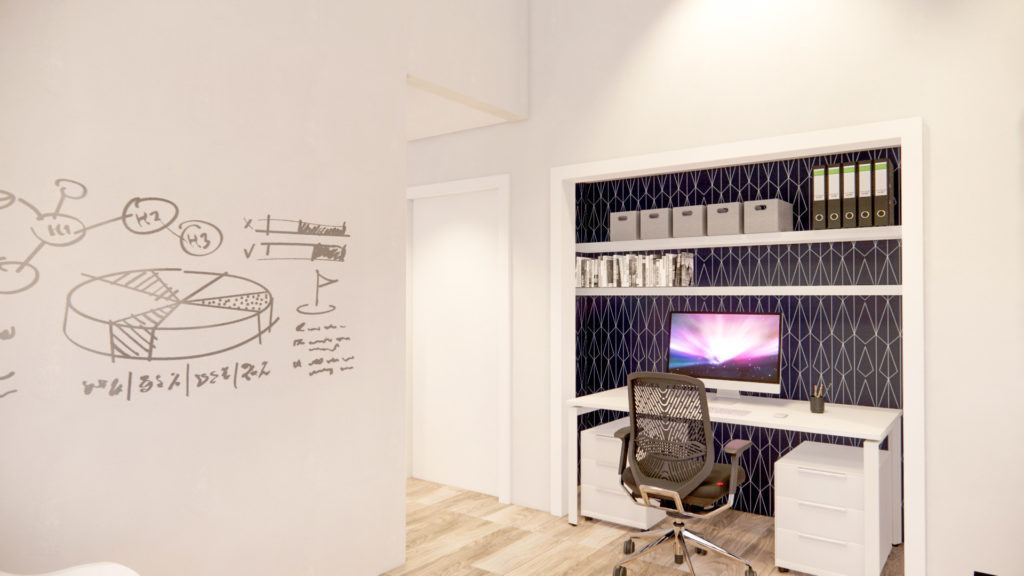
A Cloffice could be part of your bedroom, common area, or in a hallway. You have several locations to choose from. A luxury version of Cloffice is in a walk-in closet, as it could serve as a private office and perfect for teleconferencing.
Connector Office
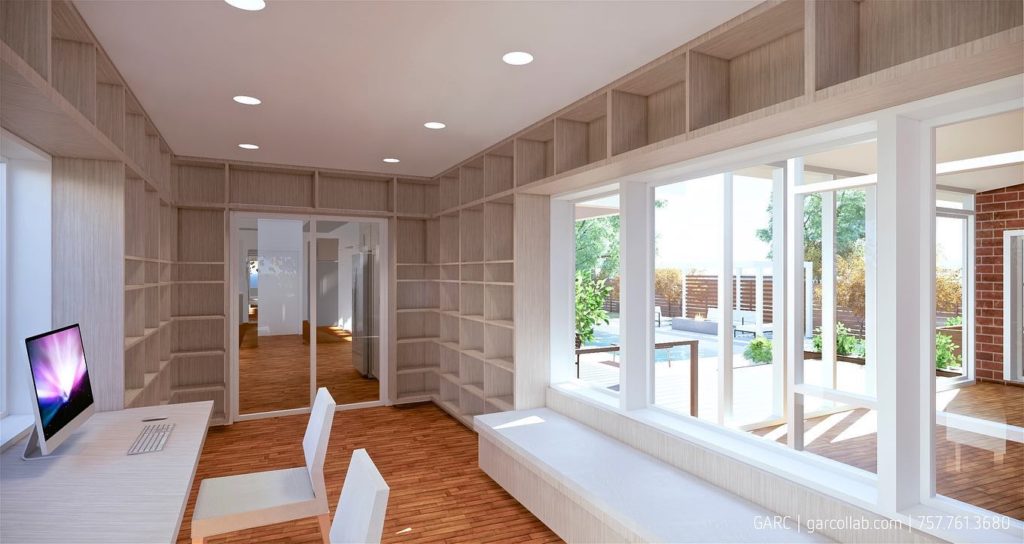
If you are planning to do an addition to your home, an office space can be assembled in the connector between a new addition and the main house in order to maximize the natural light and view. With doors on both sides, it provides the flexibility of being closed for privacy, or open to be used for the whole family.
Multifunction Office
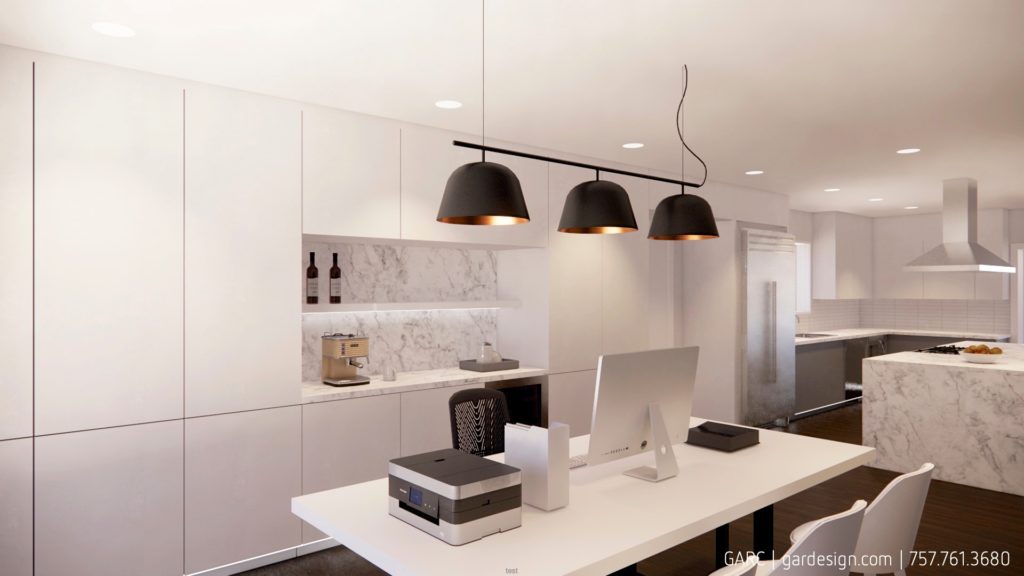
In many houses we have visited or renovated, one space that is completely underutilized is the dining room. You can convert it into a multi-function room by integrating some closed storage, book shelves, or decorative shelves, which allow you to convert it back to a decent dining room twice a year- Thanksgiving and Christmas. The dining room provides plenty of space for workers to spread out, or even share as an office with another family member.
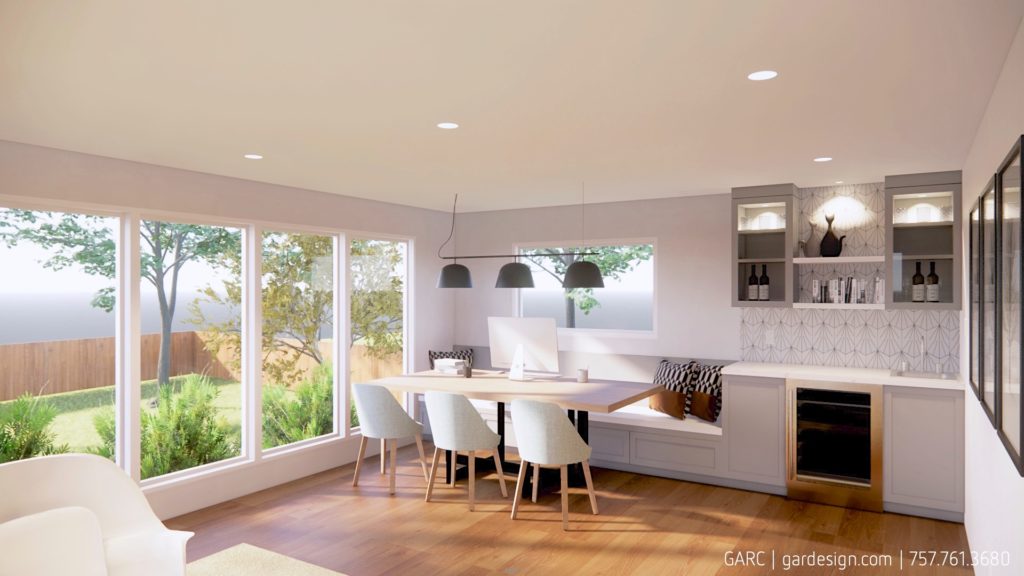
A long window seat with a large dining table on one side of the family room provides a perfect multi-purpose surface for your work, your kids, or entertaining.
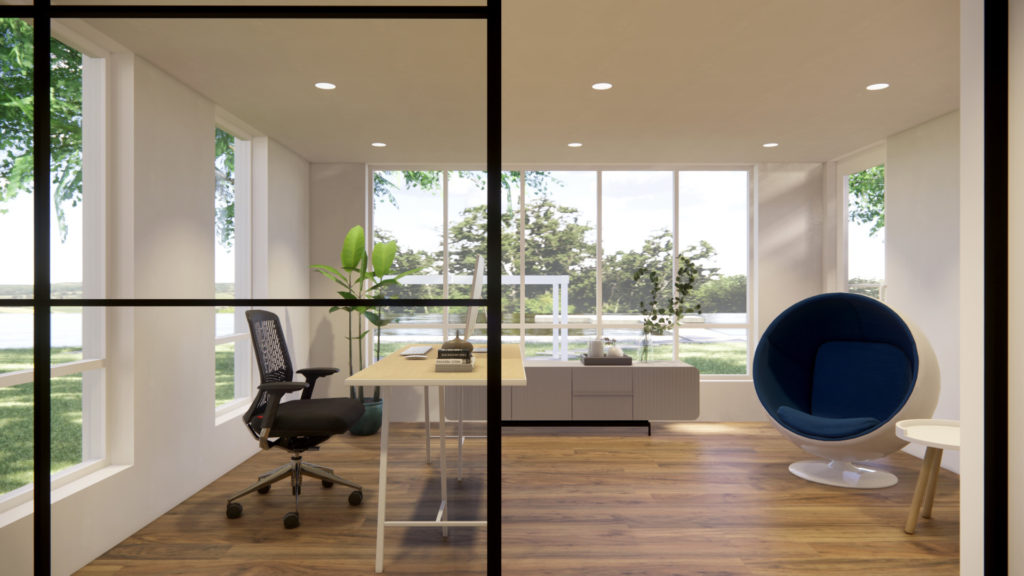
If you prefer natural light and would like to surround yourself with plants, converting your sunroom into an office might be a good idea, especially at this time of the year. Embrace this time of staying indoors by bringing the outside in. You might need some curtains or roller shades to prevent glare on the computer screen at certain times of the day.
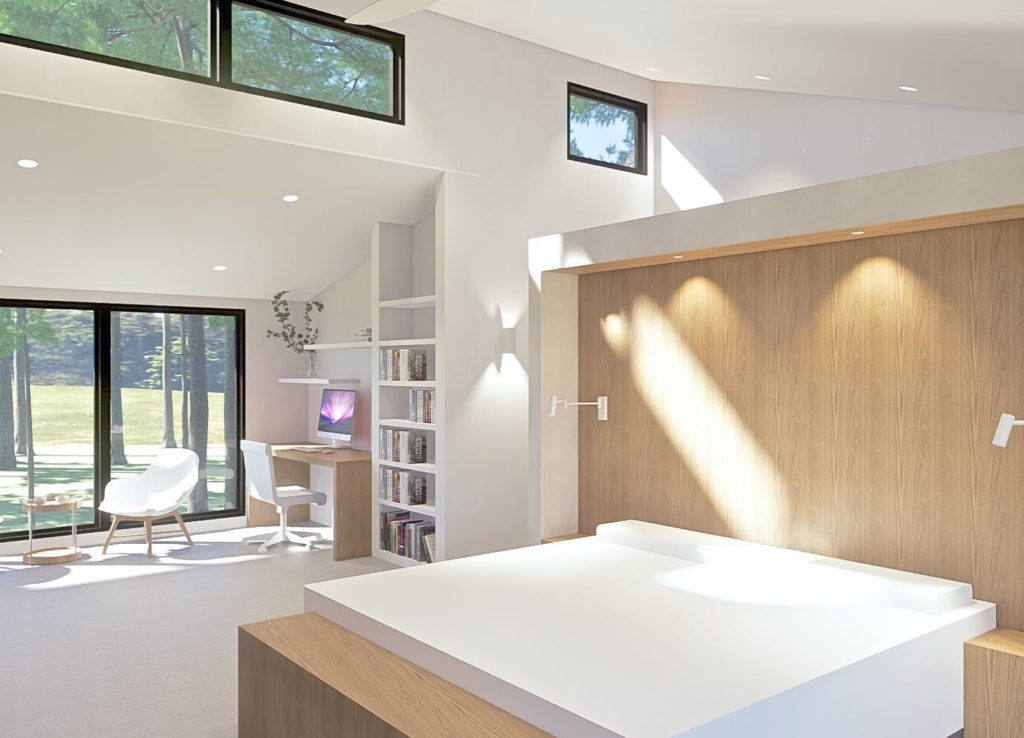
Some people may find an issue combining a room that they sleep in with a room they work in. This can be resolved through clearly defining the office area within the master suite.
Convert Garage or Shed into Office
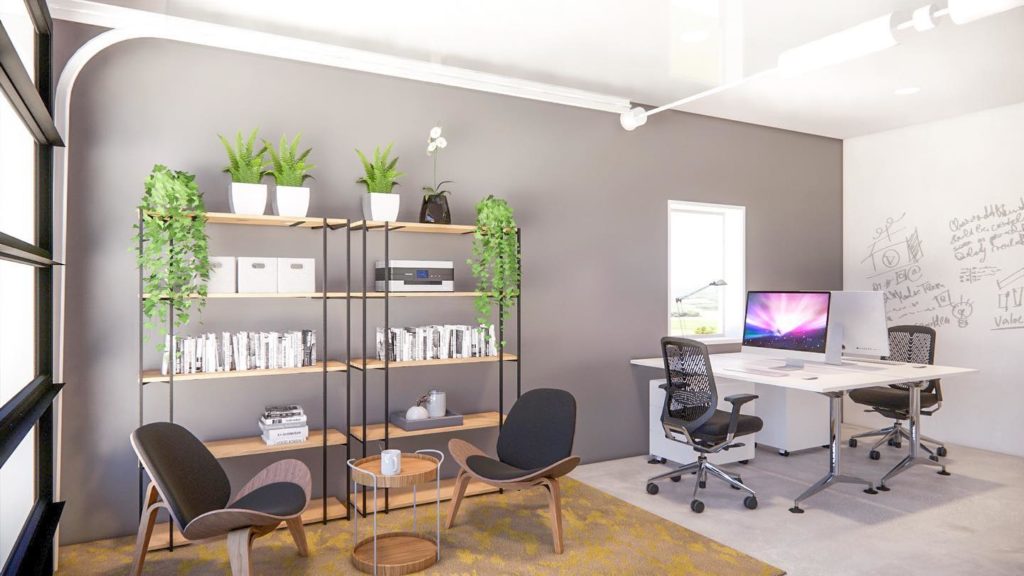
You can also carve out some space from a garage or convert the whole garage into an office suite, like many of the entrepreneurs have done. It could include multiple workstations, as well as a sitting area. For the current weather, it is not that critical to have insulation. However, if you want to make it more permanent, adding insulation and maybe a split HVAC unit would be necessary. Replacing the regular garage door with a glass garage door will allow more natural light.
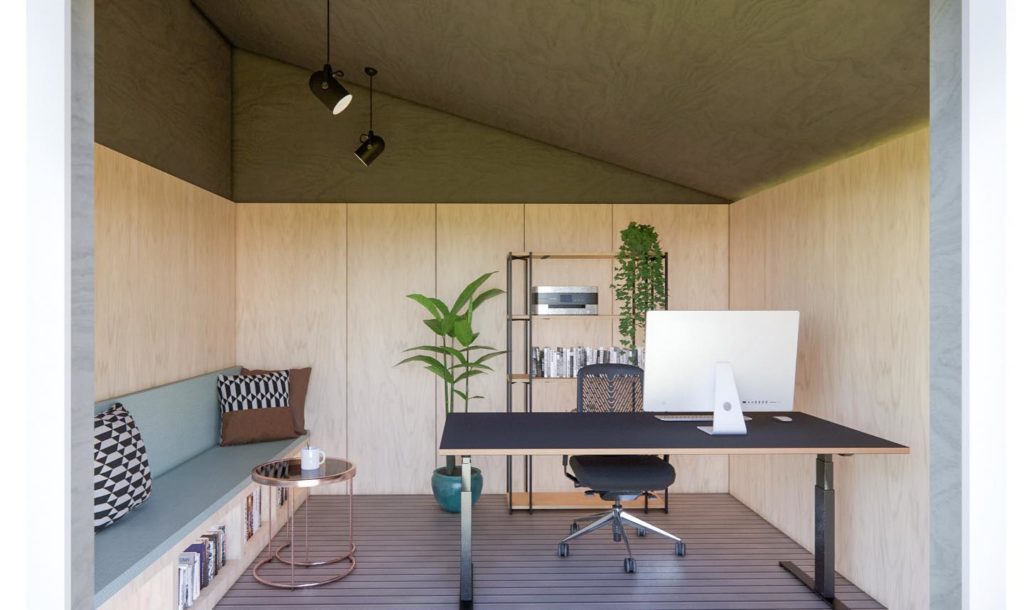
If you have a space in your backyard, it is possible to buy a shed and convert it into a cool private office. Similar to converting the garage, you may want to add insulation and a split unit to make it more comfortable. Using stained plywood panels to finish the interior can give it a contemporary feeling.
A Dedicated Office Space
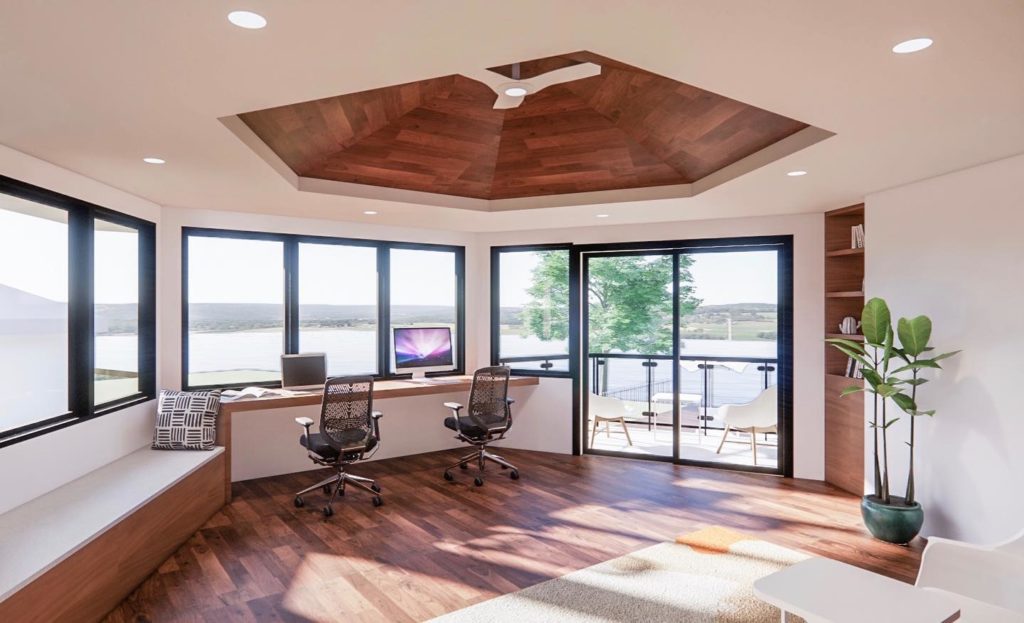
A dedicated office with a panoramic view. We will use this image to finish our Home Office Design series. WFH has already been gaining momentum in recent years, and this pandemic definitely speeds it up. Of course, the disruption in our daily life now goes beyond just WFH, and really urges us to rethink the design of our living, working and socializing spaces. With most people working or studying at home, now is an opportune time to observe how our living environment supports our daily activities and what could be improved or different.